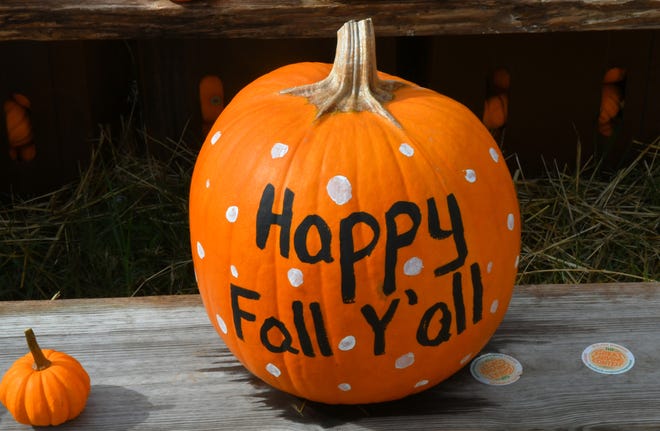Gardening: October a month of transitions

Fall is here, and the month of October will bring cooler and dryer weather to our gardens. The month begins with high temperatures in the 90s but ends with highs in the mid-80s. Lows will be in the mid-60s and could go as low as the 50s.
Fall also signals the end of the rainy season. Early October can still see heavy rains like we are experiencing now, but we can become very dry by month’s end. This is a good time to check your irrigation system to be sure it is in good repair.
More:Gardening: Lawn diseases that flourish in wet weather
Remember to get your fertilizing done this month so your lawn and plants will be healthy going into winter and the dry months. Once the cooler temperatures arrive the slow release fertilizers may not react due to cooler soil temperatures and dormant plants. The last fertilization of citrus should be applied this month to help the fruit mature and ripen. Most shrubs will get adequate fertilizer when you fertilize the lawn just by allowing it to spread into the gardens when applying it to your lawn. Some of the needier plants may need an application especially for them. Gardenias, hibiscus or newly installed plants are some examples. Remember less is always best for the environment. Integrated Pest Management applies to fertilizer as well as chemicals. If the plant doesn’t need to be sprayed or fertilized, don’t.
This is a good month to apply mulch. The heavy downpours of summer, which can wash mulch away, are just about over and mulch will dress the garden beds for the return of the winter season. It will also help to conserve water and retard weed growth. Weeds have taken over these last two months. We are spraying to kill them, and mulch would certainly help this process.
This is the last month to do any severe pruning. After mid-month the cold weather will begin to arrive, and our more tropical plants will need their foliage to protect them. Plants cut too severely will have tender new growth which could be damaged by temperatures in the 50's. After a late hurricane it can be impossible not to cut some shrubs back farther than is desirable for this time of year since they could be broken or blown over. Fortunately, really cold weather can still be a little late in arriving and most of the plants should survive.
This is the time to start planning for vegetable and flower gardens. Prepare your beds by tilling the soil and adding amendments like peat and manure. Then let the beds rest until the cooler weather arrives to begin planting. This is also a good month to plant bulbs. And if there are some plants from the north you would love to plant in your garden you can do so after you feel the cooler winds. They will last until our hot weather returns in late spring. We could all use a little bright spot of color in the landscape so bring on the flowers!
Insect pests like scale, chinch bugs, grubs, white fly and mites, once it becomes dry, will still be active. Watch for them and treat if necessary. You will find fewer pest problems with the onset of cooler weather. Disease is a problem right now, especially on lawns. The heavy rains of summer depleted our sandy soil of nutrients and we were not allowed to feed plants and lawns as we saw this happening. You will need to treat with a fungicide now to get this under control and let the fertilizer do its job at strengthening the plants, so they can grow out of the problem. Remember that fungicides do not cure disease, they only protect the healthy part of the plant and prevent disease from spreading to healthy plant parts that have not been affected. A healthy plant is better able to defend itself from disease and insects. People who eat right won’t have to take medicine to cure the diseases brought on by an inadequate diet. The same is true of using chemicals to cure plants that have not been fed when they need it.
Weeds will also invade a week lawn but not so much a healthy, vigorous one. If weeds have invaded your lawn wait until after the temperatures are in the low 80's and it will be safe to treat your lawn for weeds. Early October can still be too hot to apply Atrizine or other herbicides so be sure to wait for the cooler weather to avoid damage.
With the cooler weather also comes less growth and that means less hard labor to keep the yard in order. Come on winter! I know I am ready for a break.
More:Gardening: What you need to know for September gardening
Eileen and Peter Ward have owned a landscape and lawn maintenance company for 35 years. Eileen can be reached at Gswdmarco@comcast.net or 239-394-1413.
